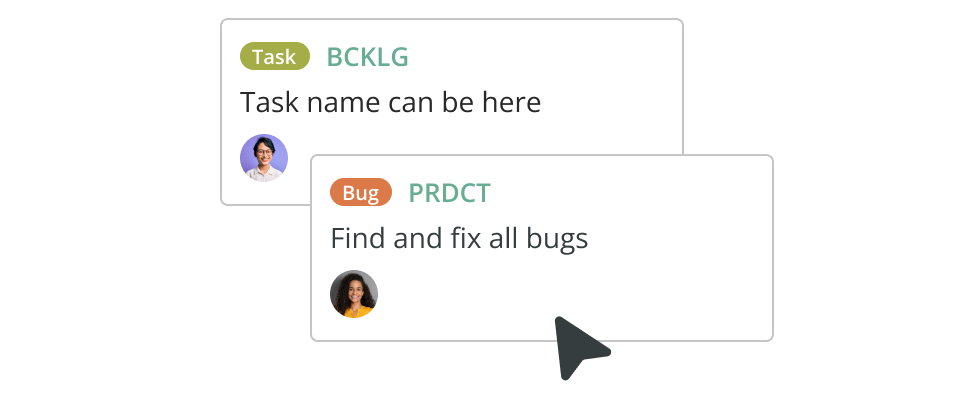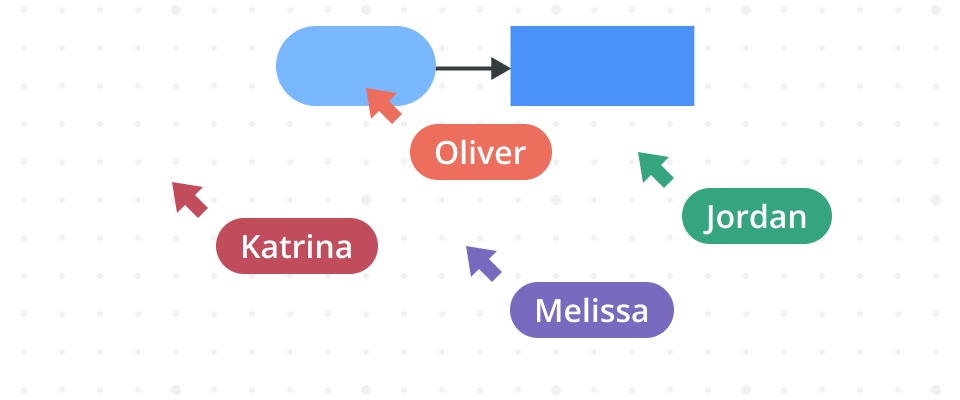Neurodiversity celebrates the natural variations in human cognition, recognizing that neurodivergent individuals—like those with autism or ADHD—often excel in areas such as pattern recognition and creative thinking. However, traditional project management tools can create barriers for these unique thinkers.
To unlock the full potential of neurodiverse teams, we need to tailor our software to support different cognitive styles instead of not supporting those with different needs.
After all, true cohesion in project management teams is only possible if everyone’s needs are acknowledged, respected, and met. So, let’s take a look at how to tweak and alter project management tools to make our neurodiverse colleagues feel right at home.
What is neurodiversity?
Neurodiversity is a concept that recognizes and celebrates the natural variations in human cognitive functioning and neurological development. It challenges the traditional view that certain neurological conditions are inherently deficits or disorders and instead embraces them as normal variations within the human population.
Conditions commonly associated with neurodiversity include:
- Dyslexia
- Attention-deficit hyperactivity disorder (ADHD)
- Autism spectrum disorders (ASD)
- Tourette syndrome
While these conditions may present challenges in certain areas, neurodiverse individuals often possess unique strengths and abilities that can be invaluable assets in the workplace.
For example, individuals with dyslexia often struggle with reading and writing but may excel in spatial reasoning, problem-solving, thinking in 3D, and innovative problem-solving. Those with ADHD might find sustained attention challenging but frequently exhibit high levels of creativity, energy, hyperfocus, and an ability to think outside the box. They also often demonstrate exceptional multitasking abilities.
Similarly, people on the autism spectrum may have difficulties with social communication, yet many have remarkable attention to detail, pattern-recognition skills, extraordinary ability to turn data into actionable insights, deep focus, and expertise in specific areas of interest.
Hence, by understanding and accommodating these unique needs, organizations can create inclusive spaces where neurodiverse talents can truly shine.
Neurodivergent challenges using project management tools
While traditional project management tools have undoubtedly streamlined collaboration and task management, they often fall short when accommodating the diverse needs of neurodiverse team members. In particular, they fail by having:
Rigid software design
Due to streamlining and efficiency being the main goals, many conventional tools are designed with a one-way approach to communication and task management, which can be restrictive.
Neurodiverse individuals might struggle with tools that rely heavily on text-based instructions or complex interfaces, leading to misunderstandings or mismanagement of tasks, and are often forced to haplessly look for alternatives.
For instance, someone with dyslexia might find it challenging to navigate through dense textual interfaces, while an individual with ADHD may require more engaging and less cluttered workspaces to maintain focus.
Few flexible communication options
Likewise, collaboration features in many tools often don’t support varied communication preferences, which can hinder effective teamwork.
Neurodiverse individuals, such as those on the spectrum, might find real-time brainstorming sessions overwhelming without options to contribute in a more controlled and timed manner.
This can lead to their insights being underutilized, affecting the creative and problem-solving capabilities of the team. Furthermore, the typical linear and rigid structure of most project management software does not cater to the flexible thinking processes of neurodiverse minds. This can stifle their ability to process information and contribute effectively, potentially leading to frustration and decreased motivation among these team members.
The cumulative effect of these barriers can lead to reduced productivity, lower morale, and suboptimal project outcomes. Teams may find themselves unable to fully leverage the unique strengths of all members, leading to a lack of innovation and a slower response to challenges.
So, what’s the solution?
Adapting user interfaces for neurodiversity
Designing inclusive project management tools that cater to neurodiverse individuals requires a thoughtful approach to user interface design. Here are some elements developers can incorporate to create environments that empower and support diverse cognitive styles:
Customizable interfaces
Offering customizable options allows neurodiverse users to tailor the interface to their specific needs and preferences. This could include adjustable color schemes, font sizes, and layout configurations to accommodate different visual processing styles.
Customizable views, such as Kanban boards or Gantt charts, can also cater to diverse task management preferences.
For example, individuals with dyslexia may benefit from the ability to change text color and background, use specific fonts designed for dyslexia, or adjust text spacing. Similarly, those with ADHD could benefit from interfaces that minimize clutter and highlight key information to help maintain focus.
Sometimes, customizing user interfaces can be challenging in itself, especially if you don’t have an in-house team of developers or system experts. However, some project management tools offer solutions that can help you tailor the tools to your team’s needs.
For example, in Backlog, Kanban boards are fully customizable, allowing teams to optimize their workflow.
Additionally, a staff augmentation process (SAP), where expert consultants can help you customize a system to be neurodiversity-friendly, can also be a helpful option.
Intuitive navigation
Prioritizing intuitive navigation and clear visual hierarchy is another handy approach for making project management tools more neurodiversity-friendly. It’s a great way to prevent cognitive overwhelm and ensure accessibility for all users. When interfaces are designed with logical and consistent navigation patterns, users can easily find the information and features they need without becoming overwhelmed or disoriented.
Moreover, implementing clear visual cues, such as labeling and iconography, can enhance comprehension and reduce the cognitive load associated with navigating complex tools. This is particularly beneficial for individuals with attention or information processing challenges, as it allows them to focus on the task at hand without being distracted by cluttered or confusing interfaces.
Flexible task management
Task management is a critical component of project success, yet traditional methods often fail to accommodate the diverse cognitive styles and needs of neurodiverse individuals. By incorporating flexible task management tools, project management solutions can empower team members to organize and prioritize tasks in a manner that aligns with their unique strengths and preferences.
For example, tools like Backlog that allow customizable task categorization, prioritization, and tracking can help individuals manage their workload according to their needs. Features like interactive checklists, personalizable alerts, and Gantt charts that provide visual timelines can assist neurodiverse individuals by providing clear, manageable steps and reducing the anxiety of large, complex projects.
This doesn’t have to be anything complicated. Even with a basic WordPress platform and a few plugins, you can provide a flexible and user-friendly way for neurodivergent team members to manage their tasks.
Visual aids and alternative representations
While some individuals excel with text-based information, others may process visual cues more effectively. Incorporating visual aids, such as icons, diagramming software, color coding, and avatars for sticky notes, can enhance comprehension and information retention.
Additionally, providing alternative representations of data in the form of charts, timelines, or mind maps, can cater to diverse cognitive strengths and learning styles. Sometimes, even something as simple as a Java-powered report generator can go a long way in enhancing inclusivity for team members who think visually.
Enhanced communication methods
Effective communication is crucial for successful collaboration, yet traditional methods may present barriers for some neurodiverse individuals. Offering a range of communication options, such as text-based chat, video conferencing, or even asynchronous messaging, can accommodate diverse communication preferences and needs.
Features like automatic transcription or visual aids during meetings can also improve accessibility and understanding.
Reducing sensory overload and distractions
Sensory processing differences can make cluttered interfaces or constant notifications overwhelming for some neurodiverse individuals. Implementing features that minimize visual noise, reduce distractions, and provide options for customizing notification settings can create a more focused and productive environment.
This is especially crucial for neurodivergent individuals working in fast-paced, data-intensive environments like trading floors and business intelligence. Reducing distractions and cognitive load can help these individuals avoid common mistakes in sectors like options trading and enhance their decision-making and productivity.
Additionally, ensuring clear information hierarchy and intuitive navigation can prevent cognitive overload and improve usability.
Assistive technologies and accessibility features
Integrating assistive technologies and accessibility features can further enhance inclusive collaboration. For example, incorporating speech-to-text or text-to-speech capabilities can support individuals with dyslexia or other reading and writing challenges.
Providing closed captioning or transcription services during meetings can benefit those with auditory processing difficulties.
Ensuring compatibility with screen readers, magnifiers, and other assistive technologies can also make project management tools more accessible to individuals with diverse abilities.
Innovative features like AI-powered task summary generators also provide a great way for people with dyslexia to understand complex tasks without having to dig through mountains of text.
Best practices for implementing neurodiversity-friendly tools
Creating a truly inclusive workplace requires more than just introducing neurodiversity-friendly project management tools; it requires a holistic approach that includes training, continuous improvement, and collaboration with experts. With that in mind, there are two pillars that aid with implementing neurodiversity-friendly tools in any organization:
Training and education for team members
Introducing new tools and processes can be met with resistance or uncertainty, particularly when they challenge traditional approaches. Providing comprehensive training and education for all team members is crucial for fostering understanding and buy-in.
This should include not only technical training on how to use the tools but also education on the importance of neurodiversity and the rationale behind inclusive design choices.
By raising awareness and promoting a culture of acceptance and appreciation for cognitive diversity, organizations can cultivate a supportive environment where neurodiverse individuals feel valued and empowered to bring their full selves to work.
Collaboration with neurodiversity advocates and experts
While organizations may have the best intentions, truly understanding and addressing the needs of neurodiverse individuals often requires specialized expertise. Collaborating with neurodiversity advocates, support organizations, and subject matter experts can provide invaluable insights and guidance throughout the design and implementation process.
These experts can offer first-hand perspectives, highlight potential challenges or barriers, and provide recommendations for creating truly inclusive tools and processes. They can suggest features and functionalities that may not be immediately obvious and help tailor the tools to better serve the neurodiverse community.
Final thoughts
Accommodating neurodiverse team members with inclusive practices and customizable tools that align with diverse cognitive styles fosters an atmosphere of innovation, creativity, and productivity, driving better project outcomes and organizational success.
But the true value of embracing neurodiversity extends far beyond the tangible benefits. It’s about creating workspaces where every individual feels valued, respected, and appreciated for their unique talents and perspectives. With the right tools and approach, this goal is completely tangible and achievable.
Author bio

Magnus Eriksen is a copywriter and eCommerce SEO specialist with a degree in marketing and brand management. Before embarking on his copywriting career, he was a content writer for digital marketing agencies such as Synlighet AS and Omega Media, where he mastered on-page and technical SEO.





